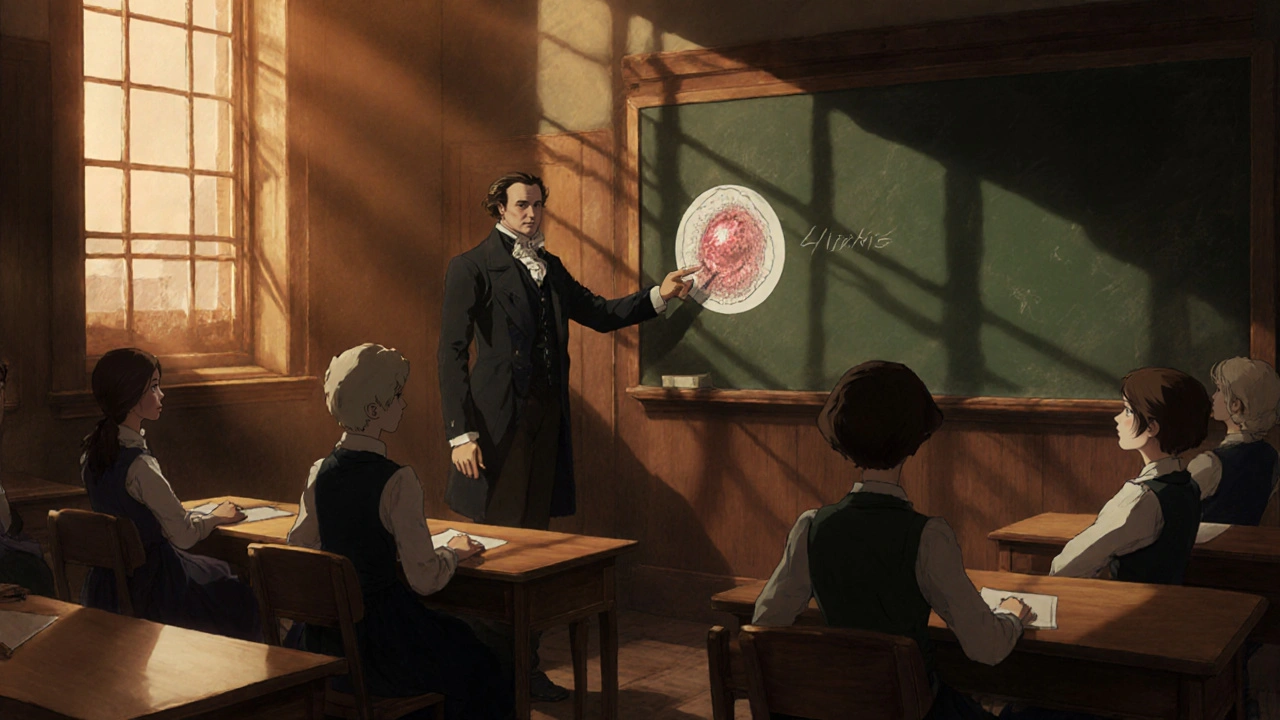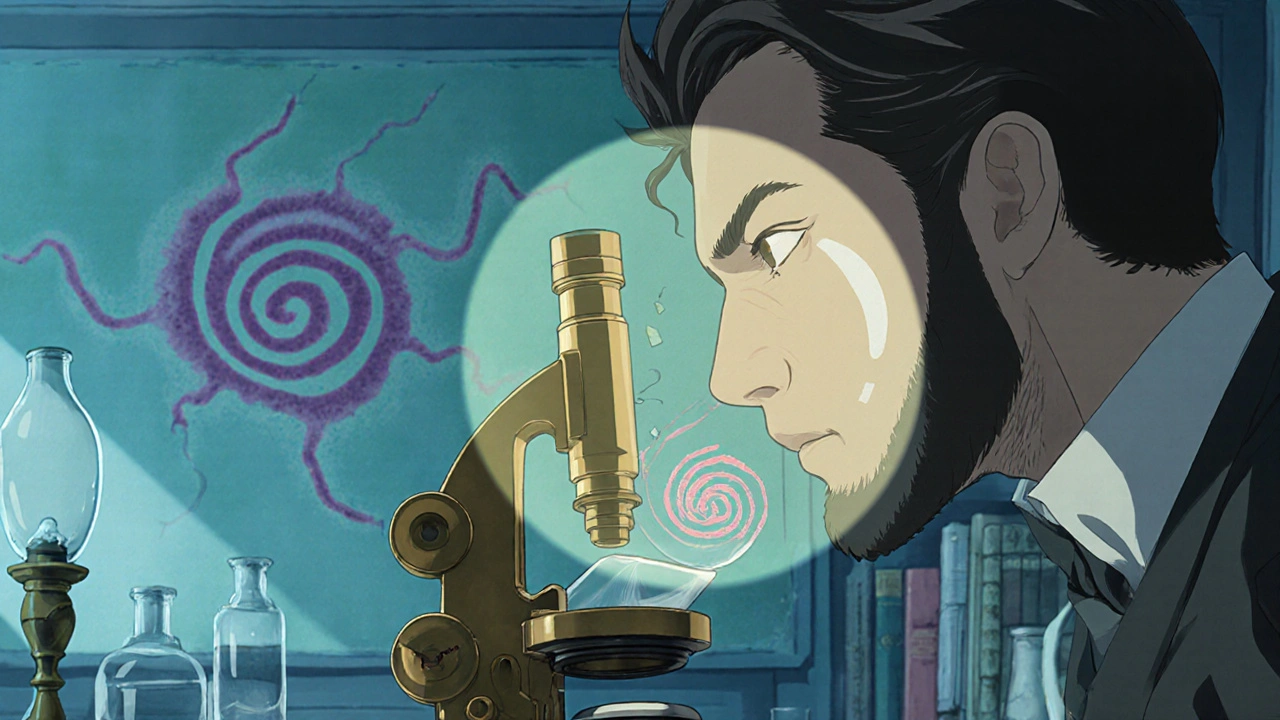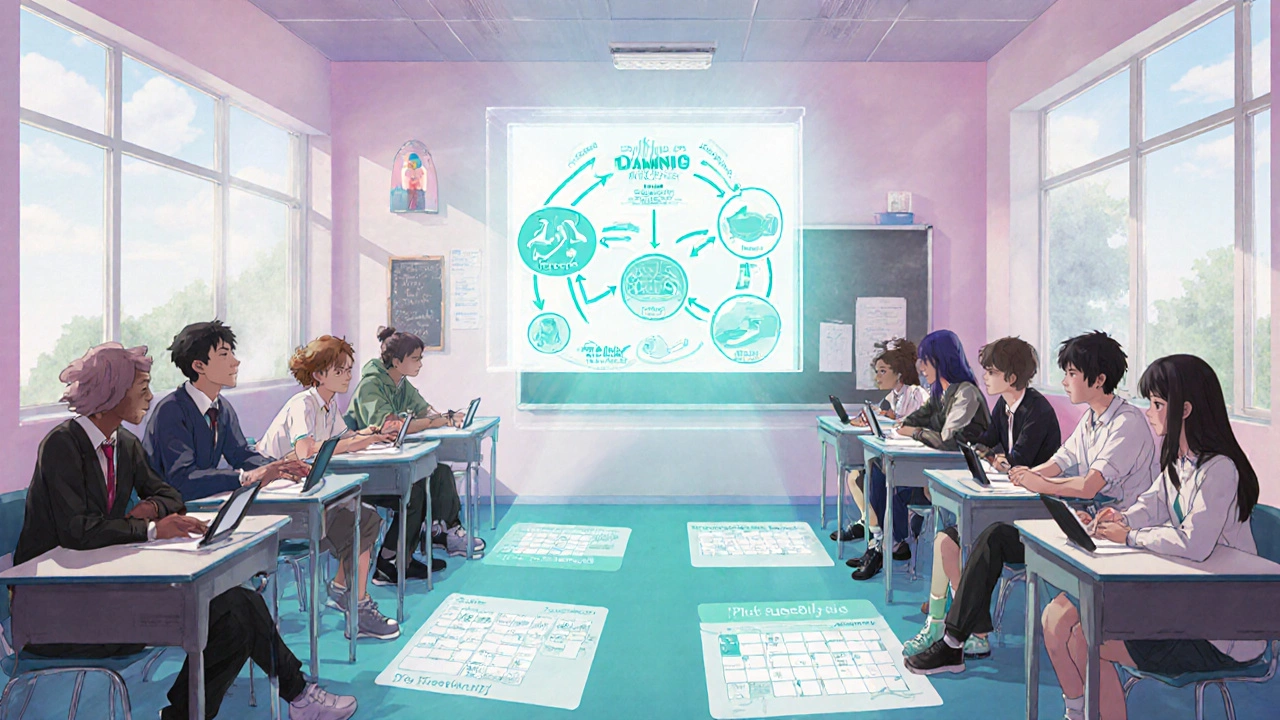How Syphilis Shaped the History of Sex Education
 Oct, 22 2025
Oct, 22 2025
Historical Sex Education Impact Calculator
How Historical Approaches Shape Modern Outcomes
This tool simulates how different historical syphilis education methods would impact modern sexual health. Select an era to see its effectiveness, stigma levels, and modern relevance.
Victorian Era (1800s)
Moral panic approach: Abstinence-focused lectures framing syphilis as divine punishment
Early 20th Century
Prevention-focused: Condom education with medical diagrams and abstinence emphasis
Post-Penicillin Era (1940s-70s)
Treatment-focused: Partner notification protocols and medical testing guidance
HIV/AIDS Era (1980s-2000s)
Integrated STI education: Combined syphilis/HIV prevention with peer education
Modern Approach (2020s)
Rights-based: Comprehensive sexual health with stigma reduction, digital tools, and inclusive messaging
Educational Impact Analysis
Select a historical era to see its modern impact simulation.
Imagine a classroom in the 1800s where the word Syphilis is a sexually transmitted infection caused by the bacterium Treponema pallidum. It first appeared in Europe in the late 15th century and quickly became a social and medical nightmare. That single disease sparked fear, legislation, and the first real attempts to teach young people about their bodies.
Why Syphilis Became the Catalyst for Early Sex Education
In the 19th century, Public Health was a fledgling discipline trying to grapple with epidemics that seemed to strike at the moral core of society. Syphilis, with its visible sores and devastating long‑term effects, fit the bill perfectly. Governments and reformers framed it as a moral menace, arguing that only by openly discussing it could they protect the populace.
But the Victorian mindset was a paradox. While the era touted modesty, it also terrified elites about the spread of "the French disease." The clash forced educators to consider how to convey facts without breaching propriety.
The Victorian Era: Moral Panic Meets Medical Reality
During the Victorian Era (1837‑1901), public lectures on "social hygiene" began to appear in factories and schools. These talks were rarely called "sex education" - the term was too blunt - but they covered the symptoms of syphilis and urged abstinence.
One pivotal figure was Sir William Acton, who argued that teaching about syphilis would reduce its prevalence and protect families. His proposals were met with both applause and backlash, illustrating the tightrope between education and scandal.
Germ Theory Turns the Tide
When Germ Theory took hold in the 1860s-1880s, a scientific explanation replaced moral condemnation. Researchers like Philippe Ricord identified the spirochete causing syphilis, which shifted the conversation from sin to disease.
This scientific grounding gave educators a new vocabulary: instead of warning about "immorality," they could explain infection pathways, incubation periods, and treatment options. The shift paved the way for organized curricula.
The Early 20th‑Century Sex‑Hygiene Movement
By the 1910s, the United States and Europe saw the rise of the American Social Hygiene Association, which championed "sex hygiene" classes in schools and workplaces. Their textbooks featured chapters titled "Syphilis: Prevention and Control," complete with diagrams of the bacterium and step‑by‑step advice on safe conduct.
These programs emphasized three core actions:
- Recognize symptoms early.
- Seek medical treatment promptly.
- Practice protective measures, most notably the use of Condom, which was promoted as the only reliable barrier.
The curriculum was still limited - it focused largely on disease avoidance rather than broader sexual health - but it marked the first systematic inclusion of a sexually transmitted infection in formal education.

Penicillin: A Game‑Changer and a New Curriculum
World War II ushered in the mass production of Penicillin, which turned syphilis from a lifelong affliction into a curable condition. The cure transformed public perception: syphilis was now seen as a treatable medical issue rather than a moral failing.
Education followed suit. Post‑war curricula expanded to cover not only prevention but also treatment pathways, counseling, and the importance of partner notification. The narrative shifted from shame to empowerment.
The HIV/AIDS Crisis Re‑Ignited Focus on STIs
When the HIV/AIDS epidemic erupted in the 1980s, health officials noticed a troubling resurgence of syphilis among high‑risk groups. The co‑infection rates highlighted that old lessons were being ignored.
Organizations like the Centers for Disease Control and Prevention (CDC) and the World Health Organization (WHO) launched integrated sexual health programs that placed syphilis side‑by‑side with HIV education. Modern sex education now embraces a comprehensive model covering consent, LGBTQ+ issues, and a suite of STIs, with syphilis as a case study.
Why Syphilis Still Matters in Today's Sex Education
In the 2020s, syphilis rates have climbed in many countries, including the United States and parts of Europe. The rise is linked to reduced condom use, online dating, and gaps in education.
Today's educators use syphilis as a real‑world example to illustrate why comprehensive, fact‑based curricula are essential. They stress:
- Regular testing - the disease can be silent for months.
- Open communication with partners.
- Access to treatment without stigma.
By framing syphilis within a modern, rights‑based approach, teachers can connect historical lessons to the health choices of today’s youth.

Comparison of Syphilis‑Centric Sex Education Across Eras
| Era | Key Focus | Teaching Method |
|---|---|---|
| Victorian (1800s) | Morality & abstinence | Public lectures, pamphlets warning of disease as moral punishment |
| Early 20th Century | Prevention & condom use | School‑based sex‑hygiene classes, illustrated textbooks |
| Post‑Penicillin (1940s‑70s) | Treatment & partner notification | Curriculum includes medical facts, counseling sessions |
| HIV/AIDS Era (1980s‑2000s) | Integrated STI education | Comprehensive programs, peer‑education, community outreach |
| Modern (2020s) | Rights‑based, inclusive sexual health | Digital modules, interactive workshops, routine testing promotion |
Key Takeaways
- Syphilis forced societies to confront sexual health openly for the first time.
- Scientific breakthroughs (germ theory, penicillin) reshaped educational content from moral warnings to medical facts.
- Each epidemic wave (syphilis, HIV) sparked curriculum updates that broadened the scope of sex education.
- Current spikes in syphilis underline the need for evidence‑based, stigma‑free teaching.
Frequently Asked Questions
How did syphilis influence the first sex‑education classes?
In the late 1800s, rising syphilis cases prompted public‑health officials to hold “social‑hygiene” talks in factories and schools. Those talks marked the earliest organized effort to teach young people about an STI.
Why was condom use emphasized in early 20th‑century curricula?
After the germ theory clarified how syphilis spread, condoms became the only reliable barrier. Sex‑hygiene programs promoted them to curb infection rates.
Did penicillin change how schools taught about syphilis?
Yes. With a cheap cure available, curricula shifted from fear‑based messages to practical guidance on testing, treatment, and partner notification.
How does the modern approach to syphilis differ from older methods?
Today’s programs treat syphilis as one of many STIs in a rights‑based framework. They stress regular testing, destigmatize treatment, and integrate digital tools for education.
What can parents do to support accurate sex education about syphilis?
Parents can start open conversations, encourage routine health check‑ups, and use reputable resources that present syphilis facts without moral judgment.
Understanding the tangled history of syphilis and sex education shows how disease can drive social change. By learning from past successes and missteps, we can build healthier, more informed generations.

Iris Joy
October 22, 2025 AT 21:50Syphilis forced public‑health officials to step out of the shadows and actually talk about bodies, which was a huge win for early education. By framing the disease as a medical problem rather than a moral failing, teachers could finally introduce anatomy and transmission facts. Today we can use that same pragmatic approach to tackle emerging STIs without shame. Encourage schools to pair historical case studies with modern testing resources so students see the continuity. A supportive, fact‑based curriculum saves lives.
Jai Reed
October 24, 2025 AT 01:36It is essential to recognize that the Victorian moral panic created a barrier that delayed scientific progress. The data show that early intervention reduced infection rates by a measurable margin. Institutions must adopt clear, evidence‑based guidelines and enforce them without hesitation. Any hesitation is a disservice to public health and must be eliminated.
WILLIS jotrin
October 25, 2025 AT 05:23History often repeats itself when we ignore the lessons of the past. The shift from moral condemnation to germ theory mirrors today's battle against misinformation. If we keep the conversation open and grounded in facts, society can avoid the cyclical panic that once crippled education.
Joanne Ponnappa
October 26, 2025 AT 09:10Different cultures handled the syphilis scare in their own way 😊. In the UK we saw more public pamphlets, while the US leaned on school lectures. Both aimed to protect people, even if the tone felt awkward.
Michael Vandiver
October 27, 2025 AT 12:56Love how we can learn from history 🙌 it shows why testing matters every day 🎯
Emily Collins
October 28, 2025 AT 16:43The blood‑red stain of syphilis on the pages of our textbooks still haunts the corridors of moral authority.
Rachael Turner
October 29, 2025 AT 20:30Syphilis acted as a catalyst that forced societies to confront the uncomfortable truth that bodies can be vessels for disease. The early lectures in factories were crude but they broke a taboo that had lasted for centuries. When germ theory arrived the fear shifted from sin to science and educators finally had a language they could trust. This transition allowed curricula to include diagrams and explanations rather than vague warnings. The 1910s social hygiene movement built on this foundation and introduced the first systematic condom education. Penicillin’s arrival turned a once‑terminal illness into a curable condition and the narrative changed yet again. Post‑war schools started teaching not only how to avoid infection but also how to seek treatment and support partners. The HIV crisis of the 1980s reminded us that old lessons can be forgotten quickly and that integrated STI education is vital. Modern programs now blend consent, gender identity, and comprehensive health information. By looking at syphilis across eras we see a pattern of fear, science, and policy evolving together. Each wave of infection sparked a curriculum update that broadened the scope of what is taught. The rise in cases today shows that stigma still hinders open discussion. Regular testing campaigns aim to catch silent infections before they spread. Digital platforms provide interactive modules that reach youths where they spend time. Open communication between partners reduces anxiety and promotes responsibility. Ultimately the history of syphilis teaches us that education must be factual, inclusive, and adaptable.
Suryadevan Vasu
October 31, 2025 AT 00:16The pattern you describe aligns with epidemiological models. Intervention timing correlates with infection curves. Accurate data drives policy adjustments. Continued surveillance is essential.
Bret Toadabush
November 1, 2025 AT 04:03All this so called "education" is just a ploy by global elites to control our bodies and keep us dependent on their meds lol.